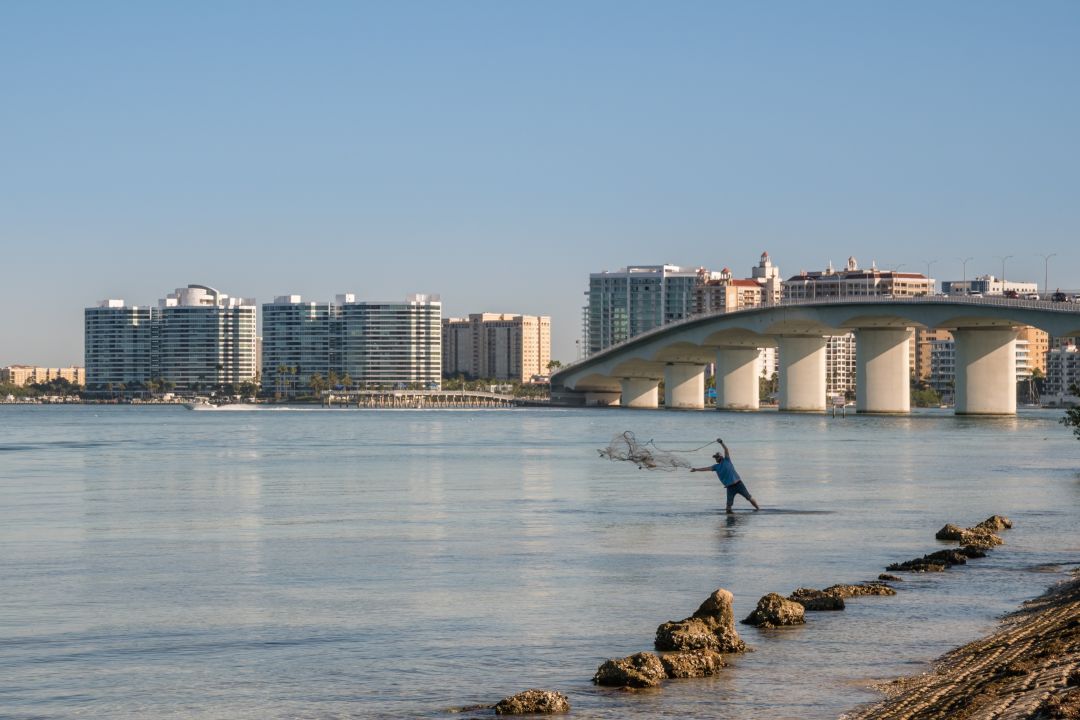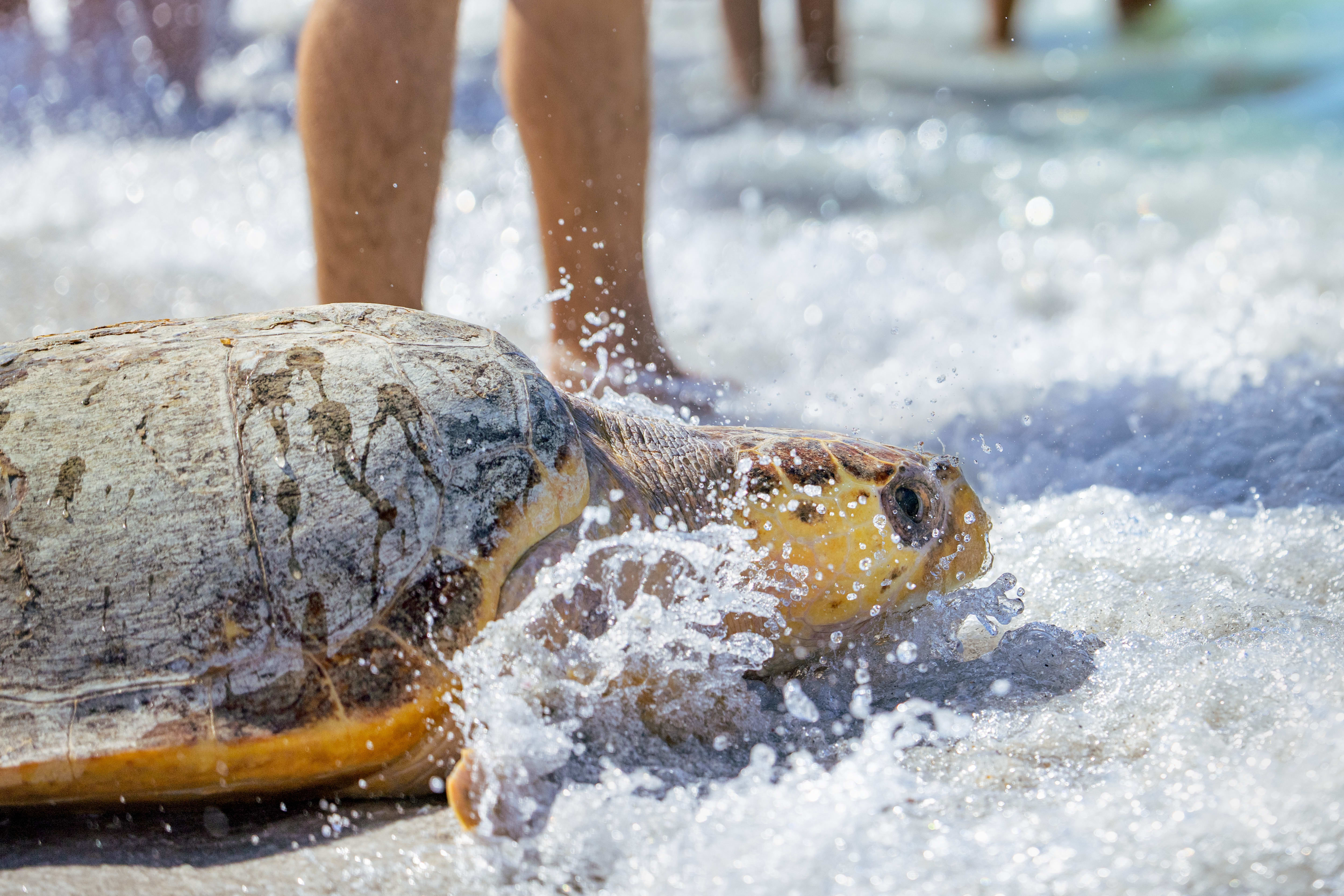Where Is It Safe to Swim in Sarasota Right Now?

Image: Heidi Besen/Shutterstock.com
The results of the most recent water sampling in Sarasota County should make swimmers cautious. Dave Tomasko, executive director of the Sarasota Bay Estuary Program, found enterococci values in Sarasota Bay that could be harmful—and that's compounded by the discovery of elevated levels of red tide near South County beaches.
Enterococcus is a bacteria that lives in the intestinal tracts of warm-blooded animals. It is a fecal indicator bacteria that usually results from sewage runoff or excess plant matter after a storm and can cause UTIs, bacteremia, meningitis, intra-abdominal infections, and wound infections if exposed.
In this case, there's good news and bad news. According to Tomasko, if you swim in upper Sarasota Bay—that is, the body of water north of Siesta Drive—you should be fine. But in the lower bay, between Siesta Drive and Venice Inlet, the latest results indicate that half the sites tested have more bacteria than the “never to exceed” level. According to Jennifer Clemente, an environmental specialist at the Florida Department of Health, that level is 70.5 colony forming units.
“At one site, we found a level four times that threshold,” Tomasko says. “In Lemon Bay, we've got values that are more than 180 times higher than the ‘never to exceed’ value for bacteria.”
The levels measured along the Gulf-facing beaches by the Florida Department of Health show no concern for enterococci. The highest level found was 20 colony forming units per milliliter of the bacteria at Turtle Beach, Venice Fishing Pier and Brohard Beach. Any level under 35 is considered "good."
The difference between what the Florida Department of Health found and the Sarasota Bay Estuary Program findings is location. The focus of the Florida Department of Health's water quality tests are on highly-populated Gulf-facing beaches, with the exception of Bird Key Point where officials found no concern for enterococci. The Sarasota Bay Estuary Program focuses testing within the bays and waterways, appropriate to their name.
"Bacteria loads from Hurricane Ian are coming in from runoff, and runoff is a larger portion of the water mass in the bays than in the Gulf of Mexico," Tomasko says. "Plus, many bacteria die off with exposure to salty water."
But is there a cause for concern at the beaches? The Florida Department of Health recently reported elevated levels of Karenia brevis, which causes red tide, at Venice Beach, Service Club Park, Venice Fishing Pier, Brohard Beach, Caspersen Beach, Manasota Key and Blind Pass.
Even with the presence of enterococci and red tide in some areas, Tomasko says it’s safe to go to the Gulf-facing beaches, but would stay away from the southern parts of our bays. He was just in the water at Terra Ceia Bay this past weekend, he says. Clemente confirmed that Sarasota County's beaches are free from any concern of enterococci and safe to swim. Both recommend staying close to northern beaches, though.
“Would I swim or wakeboard or take my daughter waterskiing in Little Sarasota Bay or Lemon Bay right now? No, I wouldn't. Not yet," he says. Tomasko also added that he would stay out of local creeks, too, for at least a few weeks.
As for the red tide at the beaches, use common sense. If you see dead fish bobbing around the in water, the potential for bacteria is high. "But [it's] also not a good idea to be breathing in vapors from red tide if others are bothered, even if you aren't," Tomasko says. "There is a body of evidence accumulating that suggests exposure to red tide toxins is not good for your health, even if you may be able to 'tolerate' it."



